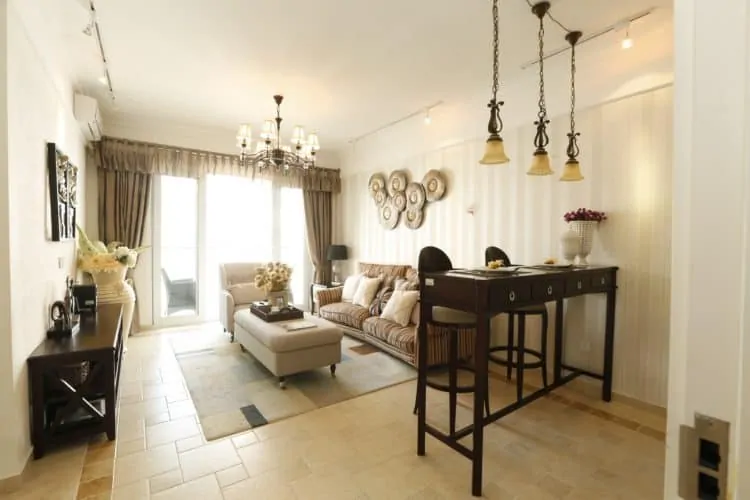
Best Home Addition Ideas
Deciding to invest in a home addition is not to be taken lightly. In fact a home addition is the single most expensive home remodeling purchase a homeowner will ever make – mostly because, unlike a coat of paint or a window treatment, it cannot be undone!
However, a home addition can do wonders for your property value and investment. Here are some of our favorite ideas for home additions, as well as a comparative list of pros and cons to consider before moving forward with a home addition.
Home Addition Ideas
There are a number of ways to execute a home addition creatively and effectively. Here are our favorite ideas.
Second Story Addition
Second story additions are the most common renovation, especially for people who are looking to add significant living space to their home without intruding on lawn space. Second story additions are wonderful investments since they hold the possibility to transform single level ranch and cape homes into spacious two story colonials.
Two-Story Additions
Different from a second story addition, two-story addition plans are perfect for homes that are already two stories, but need a two story extension of the existing house to make room for additional rooms and amenities.
The most common two-story additions transform the existing house into an L-shape or T-shape. A common way to execute a two-story addition (or multi-level addition) is by adding a family room to the first floor and adding a bedroom to the second floor. If you’re existing home is two stories, you will likely want to opt for a two-story addition.
Bedroom/Room Addition
Any room addition can best be described as a mini-house addition. This type of addition is made up of at least one room: usually a living room, dining room, or family room. Usually, more than one room is added. For example, a bedroom plus a master bathroom or living room plus an extra bathroom.
A room addition is one of the best cost-saving alternatives to full house additions and return a lot of value in relation to cost, but it still requires a lot of work and planning, since you are basically building a mini-house, complete with all the trappings of a house-build, such as architect, contractor, permits, electrical, plumbing, and more.
Bump Out
A house bump out is an type of home addition that is especially scaled-down. It’s smaller than a room addition, since it’s not a room addition, but actually an enhancement to an existing room.
One of the smallest addition options out there, the bump out can prove very valuable by adding another 50 square feet or so to your home. With that extra 50 square feet, you can transform a powder room into a full bathroom with toilet and shower, or you can expand a kitchen by adding more counter space. Simply put, if you just want a little more space, a bump out may be a good home addition option for you.
Although they are space-efficient, bump-outs aren’t always a cost-saving option, since the per-square-foot cost is high. But your total square footage is small, so you will save costs over building a full-scale addition.
Dormer Additions
One of the most unique home addition ideas is the dormer addition. There are many dormer options to consider, and because of their unique look, sometimes people just install them for looks (which are considered “false dormers) because they tend to improve curb appeal of houses substantially.
But there are many other ways to install dormers and actually increase the space of your home. “A common dormer option for Cape Cod-style homes is to put to dormers on the front and a shed dormer on the back that stretches the full length of the house in the rear” (Simply Additions).
More often than not, dormer additions do not require extensive heating or cooling work to be done, which keeps costs relatively low for this type of home addition.
Home Addition Alternatives
If you don’t want to lean into a full-scale home addition, here are some simpler addition ideas that may provide you the space expansion that you are looking for.
Sunrooms or Conservatories
If you opt for a single room expansion instead of a full “home addition,” you may want to consider a sunroom or conservatory.
While considered unpopular or impractical by some, sunrooms can make a beautiful single-room home addition to increase the size and value of your home.
With both of these room options, you definitely want to consider weather elements in your home city and building materials. While simpler to install, sunrooms that are made out of just aluminum and thin glass get a reputation for being too cold or too hot, and they can prove to be more of a headache than a respite for homeowners.
On the positive side, prefabricated sunrooms, with thermal-resistant glass and better temperature have evolved and are more readily available for homeowners today. Even aluminum frames for sunrooms have become more structurally sound.
Either way, you can expect to pay at least $11,000 for a well-made sun room of around 150 square feet.
Conservatories bear many of the same burdens and advantages as sunrooms, but they are differentiated by a specific focus on showcasing flora. Conservatories are a variety of sunroom, but tend to be pricier than sunrooms. If you have a lovely backyard or garden to emphasize, a conservatory may be an excellent home addition choice for you.
Finished Basements
If your home already contains a basement, specifically an unfinished basement, you already have access to a prime home addition alternative. By “finishing” a basement that already exists in your home, you’re creating a new livable room for your family to spend time in. Or, you may even create another bedroom for family expansion or rental possibility.
However, basements also hold the disadvantage that you’re investing a lot of time in finishing space in your home, but you don’t get the added benefit of adding any square footage to your home. Furthermore, finished basements are completely viable spaces, but unless you have a daylight basement (one side is ground-level or nearly so), they are gloomy places with few or no windows. So, you may not end up spending as much time in this room you’ve worked so hard to remodel as you would in a new, ground-level home addition.
Garage Conversion
Similar to a basement renovation, garages pose an interesting opportunity to homeowners for conversion. The space already exists, which is less intrusive, and connects to the house in a functional way.
In many cases, if your plan is to turn a garage into a general living space, there are already a number of outlets and wiring setups in existence that can be extended. Another benefit of garage conversion is that some garages already have drywall on the studs, leaving one less task to do.
However, garage conversions have their own set of drawbacks that should be considered. But garage conversions come with some serious downsides. For example, since garages are designed to separate from the home, it’s inherently harder to make a garage renovation “blend” with the rest of your house. There are a number of technical issues that may arise as well.
And finally, homes with garage conversions typically have low resale value, since houses without garages are less desirable and harder to sell, especially in neighborhoods with inclement weather to worry about.
Cons of Home Additions
Before making the decision to move forward with an addition, there are also a handful of drawbacks or “cons” you should consider.
Cost
The most obvious “con” of deciding to move forward with a home addition is the significant cost. As with any investment in your home, there is a substantial cost up front, that hopefully your efforts will pay off and provide a nice profit on.
When planning for an addition, it’s imperative to plan for all possible costs, including the often unforeseen costs of utilities and taxes that a home addition may prompt. Generally, many homeowners opt to build or renovate when interest rates are low and they can take advantage of home equity loans.
More Space = More Upkeep
By adding on any number of square feet to your home, you will of course create more space, which is commonly considered the primary benefit of any addition.
However, by adding on more space, you’re also adding on any number of rooms, furniture, electrical costs, and so on. In short, more space means higher heating and cooling costs, more windows to wash and gutters to clean, increased property taxes, and more house to clean. If you cannot support a higher electrical bill or don’t have the time to upkeep a larger space, a home addition may actually prove more costly than valuable for you.
Loss of Yard Space
Depending on the type of home addition you opt for, you will likely have to sacrifice space from your exterior to extend your interior. In fact, unless you are adding a second story addition, you can plan to permanently lose yard space. This seems to be more and more of the norm in the United States, though, as the trend toward smaller and smaller yards continues.
This should be a significant consideration in your decision, especially if you have children or pets that like to play outside. In many cases, parents will wait until their children are grown up enough to not depend on outside play space to install a home addition.
High Risk for Mismatched Design Aesthetic
Additions are large enough that they can either enhance or severely detract from your existing home’s design aesthetic.
For this reason, many homeowners opt to work directly with an architect who has the experience and knowledge to create an addition in keeping with the aesthetics of your home. Especially if you are looking to add on to your home for resale purposes, you will need to make sure the addition is visually attractive to future buyers.
Long Construction Process
Like any sizable renovation to your home, with a house addition, you can expect a long construction process. And after a while, having workers and contractors in your home at all hours of the day, not being able to feel truly relaxed in your own home, and unforeseen costs can add up, leading to a highly stressful situation for you and your family.
Pros of Home Additions
There are numerous benefits to the home addition process. It is the single-best way to add space to your home. Here are some of the top “pros” of planning a home addition.
High Cost/Value Ratio
The obvious benefit of investing in a home addition is the potential for return on investment. It is typically cheaper to build an addition than to buy a new home that equals the space of your existing house plus addition. At the very least, “the closing costs involved with selling your old house and buying the new house would push this option over the top” (The Spruce).
Studies show you can recover the cost of a mid-range home addition at the point of sale, which is oftentimes the main inspiration for many homeowners investing in home additions. But it’s worth noting that, even though extra square footage should drive up the value of your home, sellers don’t necessarily recoup their entire investment due to other variables associated with property values. This is because it’s so difficult to predict market values into the future.
Satisfying Creative Project
Any time you get to put in work on your home is an opportunity for a challenging, yet satisfying creative project. Especially with a project like a home addition, which is an opportunity to truly create something that’s your home. You can experiment with the career of an interior designer, on a much smaller, much less risky scale. In short, few remodeling projects are as thrilling and creatively satisfying as working with the blank slate that a home addition can provide.










